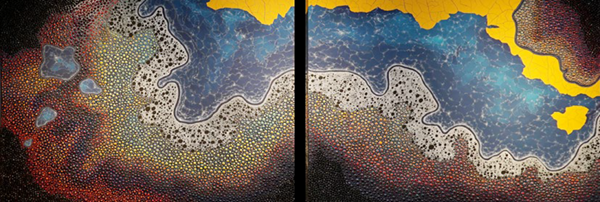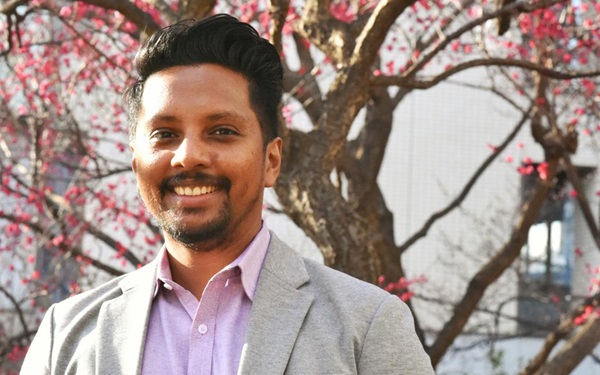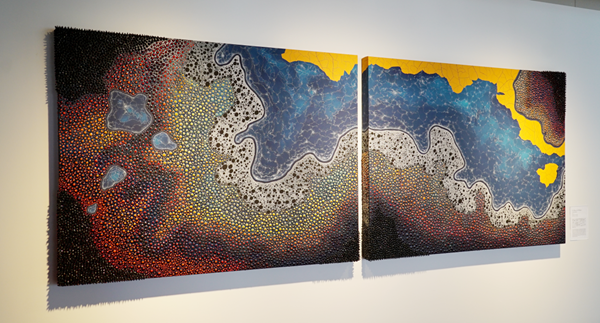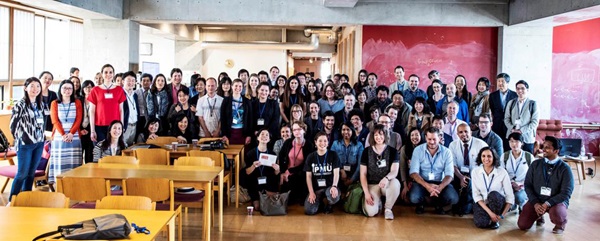A team at Japan’s Earth-Life Science Institute (ELSI), at Tokyo Institute of Technology (Tokyo Tech) is conducting evidence-based outreach to demonstrate why science communication training is so important, with an aim of encouraging other higher education and research institutions to follow its lead.

Public and government responses to the global COVID-19 pandemic and climate change have highlighted why it is so crucially important for scientists and their institutions to become better communicators. Scientific research is paid for by the people and is ultimately for their benefit, yet people tend to exhibit the signs and symptoms of science scepticism if they do not understand the science and trust the researchers. Thilina Heenatigala (he/him) is director of communications and lecturer at Japan’s Earth-Life Science Institute (ELSI). He is on a mission to standardize outreach programmes within Japanese science institutions and to give science communication the credit it deserves.

He is doing this by holding onto some of the important science communication traditions within ELSI and in Japan, while also ushering in the new.
A case in point: institutions across the country highly value their annual science symposiums. ELSI’s 9th annual symposium in 2021 and 10th symposium in January 2022 both dedicated parts of their programs to outreach and science communication. This is the first time for these symposiums not to be fully dedicated to a scientific topic.
Heenatigala and his team at ELSI’s outreach and science communication office have also been organizing promotional campaigns to encourage school students to attend some of the institute’s public lectures, which are typically attended by older audiences. Heenatigala believes this is important to improve science literacy and also inspire the next generation of scientists. Some of ELSI’s public engagement activities are now hosting much younger audiences as a result of these efforts. ELSI’s Annual Public Lecture 2022 in January was held under the title of: “From Deep Earth to Deep Space”, hosting talks by inner Earth expert Kei Hirose and planetary atmospheric scientist Yasuhito Sekine.
ELSI is so convinced in the importance of science outreach that it is launching a global science communication course in its new and upcoming five-year integrated graduate programme on origins of life studies. “A key thing universities in Japan need to look into is including formal science communication programmes in their curricula in order to generate a highly skilled outreach workforce,” says Heenatigala. Currently, he explains, outreach is conducted in most Japanese institutions by administrative staff, who love science and its communication but are not typically trained in either of these fields. These dedicated employees often find it difficult to get institutional approval to improve their skills by attending science communication workshops, as institutions aren’t conventionally accustomed to sending their staff out for training and conferences as they do for their scientific faculty. “Institutions need to encourage their staff to attend locally available training,” says Heenatigala. To address this gap, ESLI’s outreach team organizes science communication training sessions for scientists and outreach practitioners at the institution and in other parts of Japan.
In recent years, ELSI has also become very innovative in its science communication approach. Its science-art programme annually hosts an artist on the institution’s premises for a period of three to six months, with the aim of opening the minds of scientists and artists to each other’s different ways of thinking.

Japan-based Iranian artist Padi Faraji, who participated in the project in 2021, explains that working with scientists gave her a unique perspective on the universe, while the researchers she collaborated with got the opportunity to understand how the artistic approach might look at fact-based studies by thinking about the colours, smells, and other senses they involve. The collaboration produced a conceptual artwork with the theme “Origins of Life” that explores how Earth and life on it formed and evolved.
ELSI’s outreach office is also involved in publishing press releases about the science that is going on within the institution. This does not come without its challenges. ELSI research is uniquely interdisciplinary in nature, involving scientists from a wide range of backgrounds, such as biology, chemistry and astronomy. At the same time, people are often interested in origin of life science. “It is a challenge for outreach to strike a balance in covering all these areas while also making sure that the institution’s studies do not get sensationalized by the media,” says Heenatigala.
There is evidence that they have been successful in these efforts. In 2020, for example, more than 460 stories were published in local and international media about ELSI research activities.
ELSI’s outreach office is taking evidence-based evaluation of its work very seriously. Heenatigala and his team have designed the ELSI Science Outreach Evaluation Framework, which includes several methods of data collection and analysis aimed to help outreach practitioners, researchers and policymakers measure and understand the impact of science outreach activities.
Heenatigala hopes to see more formal science communication education in Japan and the wider Asia region, with more training opportunities for scientists and outreach practitioners already involved in the vocation. “It’s important for institutions to realize that science outreach requires an entirely different set of skills from science administration,” he says. Finally, he hopes every science institution on the continent ultimately develops an outreach and communication strategy. “Many universities have their vision and mission documents, but they don’t always address communication and outreach and how these can be successful. These are lacking and we should look into them.”

---------------------------------------------------------------------------------------------------------------------
EDITOR: The article was first published in the Asia Research News in FY2021.
